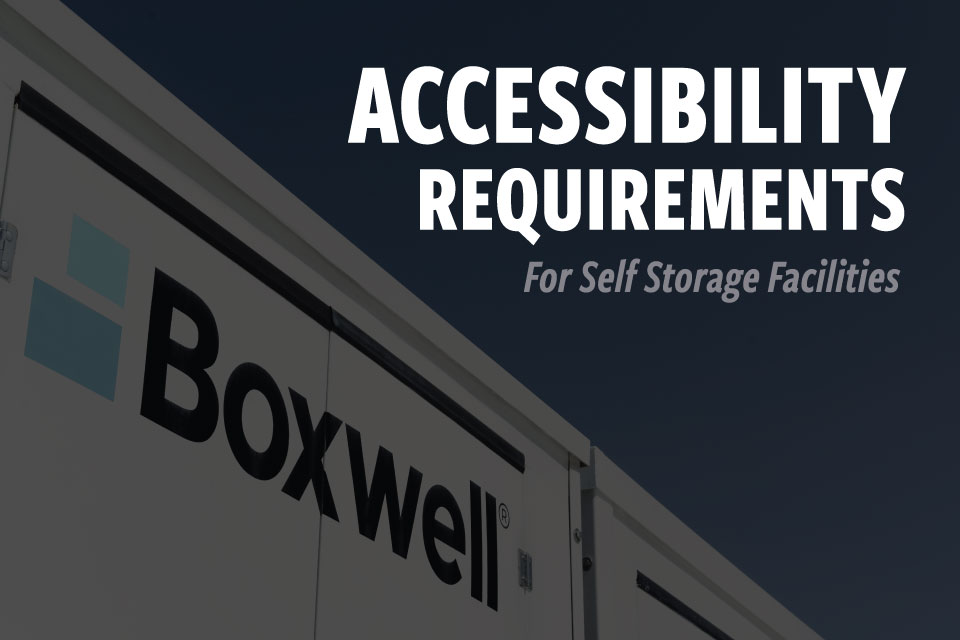
For over 30 years, all businesses in the US have accessibility requirements to follow. Since the Americans with Disabilities Act (ADA) was signed into law, companies that offer products, devices, vehicles, and services to the public cannot discriminate against people with disabilities. This includes self-storage facilities. In this blog post, we will dig into accessibility requirements within the storage industry. And we will explore how storage facilities can ensure they provide safe and accessible self-storage options with a few small modifications.

It’s essential to recognize that a substantial portion of the population, particularly those aged 65 and older, experience disabilities. Additionally, temporary disabilities caused by illness or injury can affect individuals of all ages. To be truly accessible, self-storage facilities must cater to the needs of all potential customers, ensuring that everyone can use their services comfortably and safely. This not only benefits customers but also minimizes liability and risk for business owners.

Storage facilities can comply with the regulations by making just a few modifications to a portion of their storage units. Namely, by adding ropes and pulls, ramps, and specific signage. Basic accessibility requirement ensure that customers and employees are able to easily open and close the doors. So, to be compliant with the ADA, self-storage facilities need to add pulls and ropes to doors. It is also important to set ramps at the entrances of storage units and offices. And signage that is both visible and readable through braille is key. And lastly, your unit mix matters. Self-storage facilities must have a certain number of ADA compliant units.


When planning the accessible portion of your self-storage facility, your door choice matters. Roll-up doors are a suitable option for ADA compliance. Instead of swinging out, these doors roll up into the ceiling portion of the unit. This saves space and allows for wheelchair access. Plus, with roll-up doors, there are just a few modifications necessary for accessibility compliance:
- A pull handle must be installed on the door between 15 and 48 inches above ground level, with a loop large enough for someone in a wheelchair to use effectively.
- A nylon rope should hang between 15 and 48 inches when the door is open, also featuring a loop large enough for wheelchair users.
- Doors must be tensioned for easy opening and closing.
For smooth entry, accessible self-storage units need to have ramps covering the entire width of each unit at the door. These ramps are especially important for people with wheelchairs, but they also help with general loading and unloading. The ADA outlines requirements for larger restroom spaces to accommodate wheelchairs, workspace considerations for disabled employees, and the need for braille signage outside accessible units.
And lastly, to meet the accessibility requirements, self-storage facilities must make unit mix considerations. For example, for the first 200 units at a facility, at least 5% must be ADA-compliant. Beyond the initial 200 units, 2% of any additional units must also adhere to the requirements. This ensures that customers with disabilities have options when choosing their storage units.
In addition to unit accessibility, self-storage facilities should consider other aspects:
- Adequate accessible parking spaces
- Counter heights in the office
- Accessible restroom design
- Sufficient lighting on the property
- Easy-to-operate locking system
- Accommodations for service animals
The self-storage industry is well-positioned to meet ADA regulations due to its typically wide driveways and spacious storage units designed to handle large and heavy loads. Ensuring full compliance with these regulations will not only enhance accessibility but also protect your business from potential legal issues. Let’s make storage safe and convenient for everyone!
